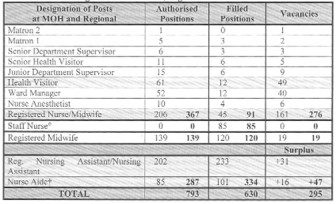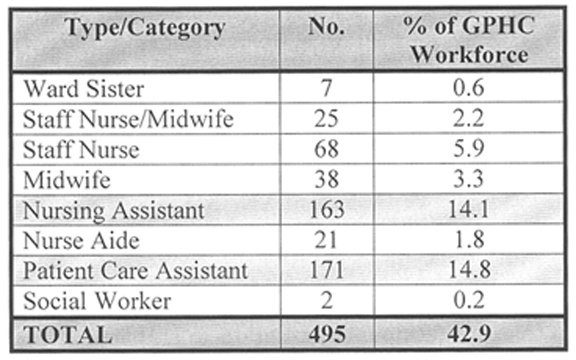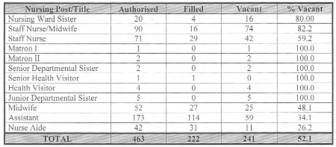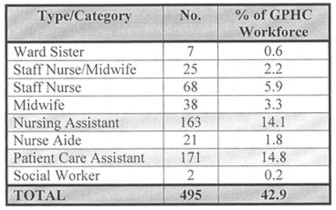Dear Editor,
There was reported in the press an interview given by the current Minister of Health, during which great anticipation was indicated of an ‘influx’ of ‘nurses’ – assessed as the biggest ever – a comparability that carries no substantive meaning if it is without reference to specific details.
In a related study completed not so long ago which evaluated the overall health workforce capacity in the public health system, one of the observations made of ‘nursing’ shortages was that there was both a “dearth in absolute numbers and a lack of specialists such as anaesthetic, psychiatric, and pediatric nurses.” Not unrelated was the study’s further comment to the effect that there was “no functioning database in place at the Central Ministry or at the Regional levels to effectively capture the attrition rate of health staff,” because such data were not routinely compiled and hence not available in reports for planning in human resources management matters. It is possible that the situation may have improved since.
What is important for the public (and prospective patients) to note is that the use of the descriptor ‘nurse’ misrepresents the levels at which this category of health personnel operates.
For example, the abbreviated Table below shows the staffing situation amongst identified grades of ‘nursing’ at January 2008.
TABLE
 Health Sector – Nursing Cadre – posts and staffing, December 2007
Health Sector – Nursing Cadre – posts and staffing, December 2007
The second Table below provides a more comprehensive coverage of the employment status as regards to ‘nursing’ at January 2008.
TABLE
 Nursing Personnel at MOH, Regional and Health Centres
Nursing Personnel at MOH, Regional and Health Centres
° To be queried
† Note surplus of under-qualified staff to compensate for high incidence of vacancies in qualified positions
Amongst several other observations the study concluded that:
a) The single greatest challenge to the delivery of quality nursing care was the acute shortage of professional nurses.
b) New nurses became easily frustrated in such an environment because of lack of support.
c) The few older nurses were under enormous strain to cope with the volume of work and responsibility.
d) The registered nurse must continue to be responsible for the overall assessment, planning, intervention and calculations when tasks are delegated to unlicensed caregivers.
For example, at the same period under discussion, if one were to look at GPHC the study showed that of a workforce of 1154, the nursing contingent was distributed as follows:
Interestingly a companion analysis at the time showed the following situation in respect of Region 6.
Obviously one would expect that improvements were made since the reporting period cited above.
This recital is therefore aimed at eliciting greater clarification of the quantum and quality of the “nursing influx” alluded to by the Minister.
Yours faithfully,
E B John







